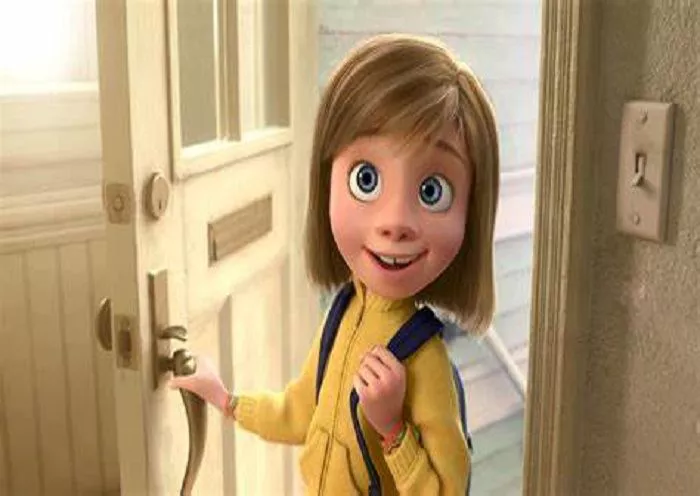Animated films have the unique ability to capture the hearts of both children and adults alike. Pixar’s “Inside Out” is a prime example, offering an emotional journey through the mind of a young girl named Riley. The film explores complex emotions and psychological development in a way that resonates with viewers of all ages. With the release of “Inside Out 2,” fans are eager to revisit Riley’s story and see how she has grown. This article delves into the age of Riley in “Inside Out 2,” examining character development, plot progression, and the significance of her age in the narrative.
Understanding Riley’s Character Development
Riley in Inside Out
In the original “Inside Out,” Riley is introduced as an eleven-year-old girl. Her family moves from Minnesota to San Francisco, triggering a series of emotional challenges. Through the adventures of her core emotions—Joy, Sadness, Anger, Fear, and Disgust—the audience witnesses Riley’s struggle to adapt to her new environment. By the end of the film, Riley begins to embrace her changing emotions, marking the start of her transition into adolescence.
The Transition into Adolescence
Adolescence is a critical period characterized by significant physical, emotional, and social changes. In “Inside Out,” Riley’s move and subsequent experiences serve as catalysts for this transformation. As she navigates these changes, her emotions evolve, reflecting the complexity of growing up. This foundation sets the stage for exploring more advanced stages of development in “Inside Out 2.”
Riley’s Age in Inside Out 2
A Leap Forward in Time
“Inside Out 2” picks up several years after the events of the first film. Riley is now thirteen years old, firmly rooted in early adolescence. This leap forward allows the filmmakers to delve deeper into the challenges and triumphs associated with this developmental stage. At thirteen, Riley faces new pressures at school, evolving relationships with friends and family, and the emergence of more nuanced emotions.
Exploring Early Adolescence
Thirteen is a pivotal age for many young people. It marks the beginning of middle school or high school, where academic expectations increase and peer influence becomes more pronounced. Social dynamics shift as teenagers seek independence while still relying on parental guidance. For Riley, being thirteen means grappling with identity formation and self-discovery, themes that resonate strongly with audiences experiencing similar transitions.
Significance of Riley’s Age in the Narrative
Emotional Complexity
At thirteen, Riley’s emotional landscape expands beyond the five core emotions introduced in the first film. New emotions like Anxiety, Confidence, and Love may emerge, reflecting the broader spectrum of feelings experienced during adolescence. This expansion enriches the narrative, providing opportunities to explore deeper emotional states and their impacts on behavior and decision-making.
Relationship Dynamics
Riley’s relationships also evolve as she matures. Friendships become more intricate, with shared interests and mutual support playing crucial roles. Family dynamics shift as Riley seeks greater autonomy, leading to moments of conflict and reconciliation. These evolving relationships highlight the importance of communication and understanding in maintaining healthy connections.
Personal Growth and Challenges
Being thirteen brings both growth and challenges. Riley must navigate increased responsibilities, such as managing time between schoolwork and extracurricular activities. She also confronts personal insecurities and questions about her place in the world. Through these experiences, Riley learns valuable lessons about resilience, adaptability, and the power of positive thinking.
Visual and Thematic Elements
Changes in Visual Representation
Visually, “Inside Out 2” reflects Riley’s maturation. Her appearance evolves to match her age, featuring subtle changes in style and demeanor. The setting of San Francisco remains familiar yet takes on new dimensions as Riley explores different parts of the city. These visual cues enhance the sense of continuity while signaling the passage of time and growth.
Thematic Expansion
Thematically, “Inside Out 2” builds upon the foundational elements established in the first film. Concepts like memory, imagination, and personality islands receive further exploration, revealing how they continue to shape Riley’s identity. New themes related to self-acceptance, empathy, and mental health come to the forefront, addressing contemporary issues faced by young people today.
Critical Reception and Audience Impact
Positive Responses
Critics and audiences have generally praised “Inside Out 2” for its thoughtful portrayal of adolescence. The film’s handling of complex topics in an accessible manner has been commended, making it relatable to a wide range of viewers. Fans appreciate seeing Riley’s continued journey and the introduction of fresh characters and scenarios that keep the story engaging.
Engaging Young Audiences
One of the strengths of “Inside Out 2” is its ability to engage young audiences. By focusing on relevant issues and presenting them through an imaginative lens, the film captures the attention of teenagers while delivering meaningful messages. Parents and educators find value in using the movie as a tool for discussing important topics with young people.
Conclusion
In conclusion, Riley’s age of thirteen in “Inside Out 2” plays a crucial role in shaping the film’s narrative and thematic depth. Through her experiences, viewers gain insights into the challenges and rewards of early adolescence. The film’s exploration of emotional complexity, relationship dynamics, and personal growth offers a rich and relatable story that resonates with audiences across generations. As Pixar continues to push boundaries in storytelling, “Inside Out 2” stands as a testament to the power of animation in addressing profound human experiences.
Relate topics
- WHO IS THE VILLAIN IN INSIDE OUT 2?
- WHAT INSIDE OUT 2 TEACHES US ABOUT ANXIETY?
- WHY IS INSIDE OUT 2 MAKING SO MUCH MONEY?

